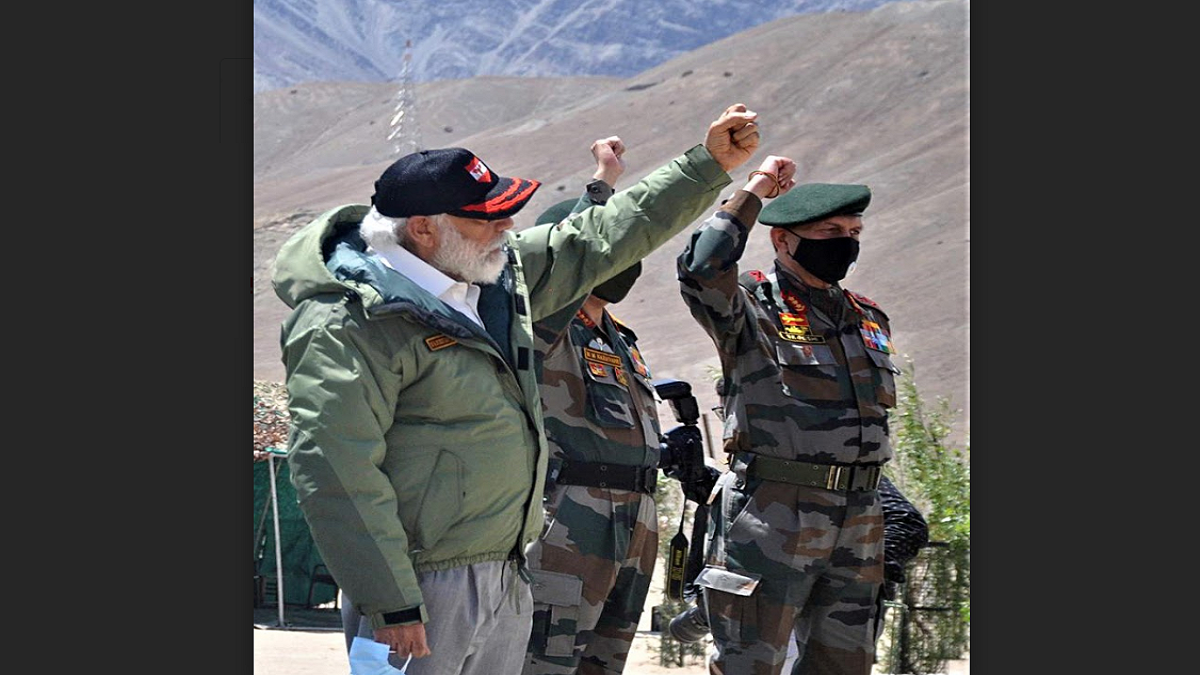


Why did the Chinese People’s Liberation Army (PLA) break the peace and tranquillity of the last 53 years on the Line of Actual Control (LAC) with a bloody attack on 15-16 June just after agreeing to disengage on 6 June? Several factors which China considers vital for its national security, regional, global status and fulfilment of its cherished dream to emerge as ‘numero uno’ in the world might have pressed the trigger.
Increasing international criticism of China for not coming out clean about the origin of the deadly coronavirus; internal murmurs questioning Xi Jinping’s leadership; US President Donald Trump’s tantrums demanding $1 trillion as compensation, threats to cut ties and asking American companies to pull out of China; India’s increasing closeness to the US; apprehensions about India’s role as newly elected chair of the WHO’s 34-member executive board with regards to probe of Covid-19; India’s decision to stay out of the BRI and RCEP, virtual attendance at the swearing-in ceremony of Taiwan’s new President by two BJP MPs; sudden spurt in India’s interest in Quad; India’s decision to convert Ladakh in to a UT—these are important factors. Above all, what might have provoked China is the construction of infrastructure by India on its side of the LAC, especially, the link road to the 255-km Darbuk-Shyok-Daulat Beg Oldie (DSDBO) road, expected to be completed by this year end, which would join Leh to the Karakoram Pass, to significantly reduce commuting time and would enable India to keep a watch on Aksai Chin and, if required, disrupt China-Pakistan Economic Corridor.
Thanks to its size, population and economic potential, China considers India the biggest obstacle in the realisation of its dream to become the next superpower in the world. So, giving a bloody nose and cutting India to size at this time, as they did in1962, will not only shatter India’s aspirations to be a major global player but also send a clear message to other countries in the region and beyond that joining an anti-China axis might entail grave consequences for them. Thus, the brutal attack in the Galwan Valley shouldn’t be seen in isolation. It was a premeditated attack deserved to be viewed as an extension of China’s recent aggressive assertiveness against its neighbours in South China Sea and elsewhere.
The manner in which the Bihar regiment regrouped and responded valiantly after the unexpected attack by the PLA, reportedly killing twice the number of the Chinese soldiers and demolishing the structure built by them on the Indian side of the LAC, would have buried the ghosts of the debacle of 1962.Psychologically, it would have injected a huge dose of morale booster in the Indian Army and sent out a strong message to the Chinese leadership against any future misadventure. With the change of the rule of engagement by India, any future clash on the LAC will get much bloodier; this might deter the PLA against underestimating India’s capability to retaliate.
Excluding Chinese firms from bidding for certain projects, subjecting them to closer scrutiny, exhorting Indians not to buy Chinese products, reducing imports from China, banning 59 Chinese applications are shortterm measures which are unsustainable, difficult to implement and damaging to Indian business, but they would send a strong message to China that it’s no longer business as usual.
But once the dust and din, anger and outrage have subsided, the two sides will realise that the border dispute has no military solution. It will have to be a political compromise that can be explained to the public as a ‘win-win’ agreement. Jingoism, chest-thumping bravado and enhanced rhetoric won’t help. Along with the display of defence preparedness, quiet diplomacy and political dialogue conducted with maturity and foresightedness, addressing the boundary question with maximum flexibility and accommodation on priority are the need of the hour.
China must realise that India isn’t a small nation, it can’t be bullied. While at the moment China’s economic and military power are four times bigger than India, it remains the only country that can match Beijing, if not surpass it. In brief, China must treat India with respect and refrain from fomenting problems for New Delhi in Pakistan, Nepal, Bangladesh, the Maldives, etc.
In realpolitik, respect flows from one’s own economic, political and military strength. For the next ten years, India must focus on putting its house in order: maintain social harmony, fast-track economic development, build infrastructure, generate employment and create an investment-friendly ecosystem that will attract leading foreign firms. If the drivers of economic policies and their implementers are in sync, ‘Make in India’, ‘Aatmanirbhar Bharat’ and other endeavours to become a hub of the global supply chain can complement. At a time when both India and China are fighting against Covid-19 and their economies are witnessing a steep downturn, the two Asian giants can’t afford an all-out confrontation. The leadership of the two nations should have enough sagacity to address both internal and external threats.
The author, a former Ambassador, writes on strategic affairs.